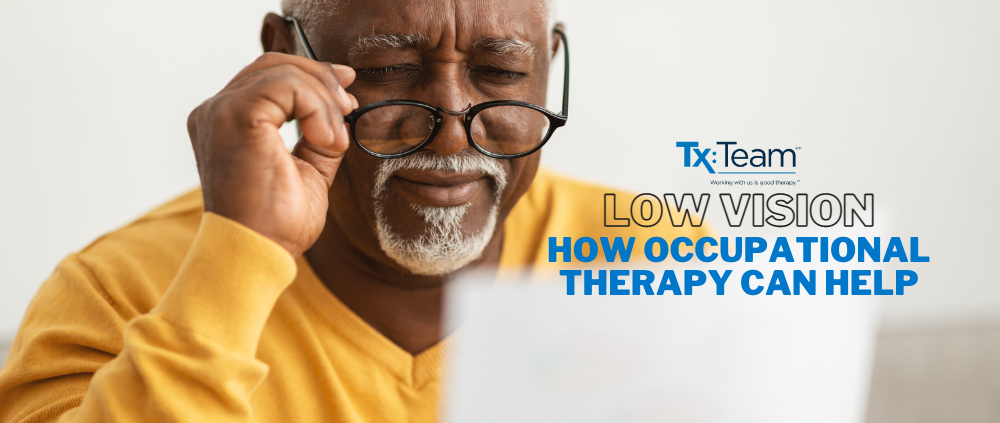How Can OT Help with Low Vision
What is low vision?
Low vision is permanent vision loss from an eye disease or condition that cannot be corrected by standard treatments like glasses or contacts, medications, or surgery. With impaired vision, it becomes very difficult to complete tasks such as reading, navigating home and community environments, managing medications, managing calendars and appointments, managing finances, preparing meals and snacks, driving, recognizing faces for social participation, using household appliances like dishwashers, washing machines, and microwaves, and so much more.
What can one do to prevent low vision?
The best way to prevent low vision is to have routine checkups with an optometrist or ophthalmologist and, if diagnosed with an eye condition, adhere to the prescribed care plan laid out by the doctor. The three most prevalent conditions resulting in low vision are macular degeneration, glaucoma, and diabetic retinopathy. If one has a family history of eye conditions, it is crucial to have routine eye exams. It is also important to manage your health conditions, for example, controlling blood sugar is extremely important in preventing diabetic retinopathy. Once these eye conditions are present, they cannot be reversed, but further impairment can be prevented. This is why it is so important to follow the doctor’s instructions once diagnosed with an eye disease.
How can therapy help?
Since low vision is permanent, occupational therapists are not able to restore lost vision, but we can help those with low vision best utilize their remaining vision to be as successful and independent as possible. Occupational therapists perform home assessments to identify potential hazards and make appropriate modifications for safety and success. Some examples include adjusting lighting, removing clutter, and adding a contrasting color to doorways, steps, or thresholds. Occupational therapists may also modify the task, teach new skills, and utilize technology to improve daily function. Visual scanning and tracking techniques may be taught to better utilize remaining vision or, one may be introduced to adaptive tools and technology.
Each condition resulting in low vision impacts the visual field differently and have their own unique set of challenges. Occupational Therapists understand these conditions and how they impact the visual field. Occupational Therapists combine this knowledge with an individualized approach in order to provide training and modification in the client’s home and immediate surrounding community for optimal performance of the activities that are meaningful to the client.
Anna Pung, OTR is an Occupational Therapist in the Senior Living setting. She has a Master of Science in Occupational Therapy from the University of Alabama at Birmingham (UAB) and Bachelor of Science in Psychology from Mississippi State University. Shespecializes in low vision, dementia, fall prevention, orthopedics, and neuro rehab. Anna is very passionate about working with individuals throughout the aging process to maintain independence and high quality of life.



